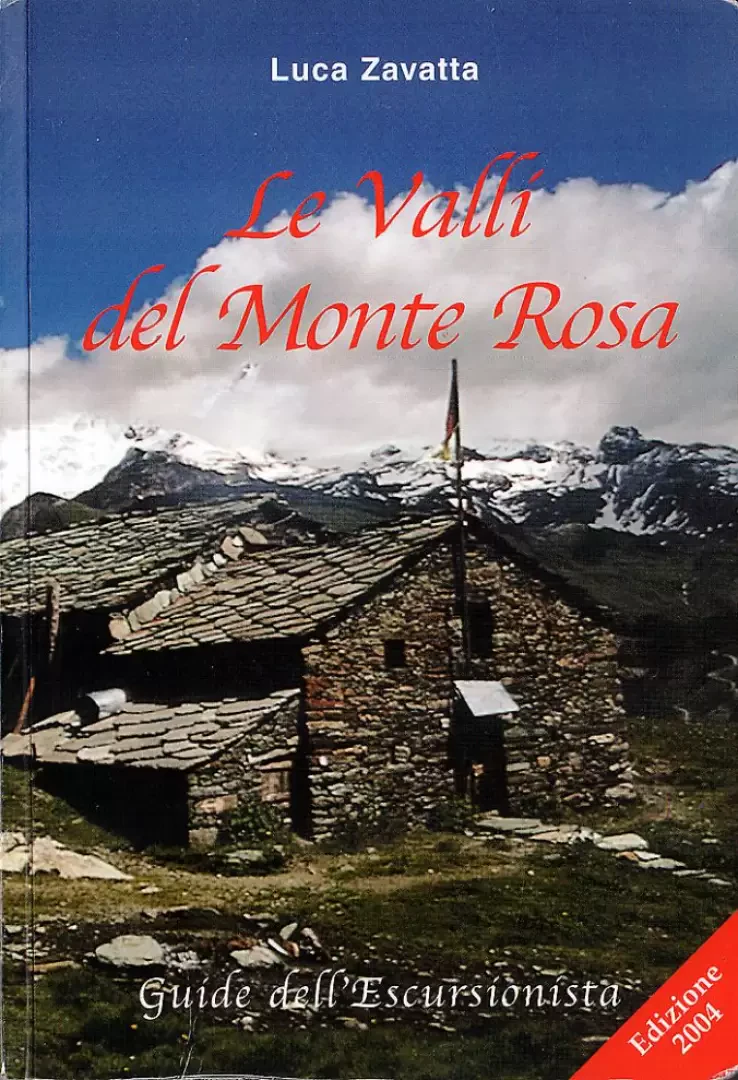
This new guidebook, the third on the Valle d'Aosta written by the same author, is still fresh from the press. It re-proposes a style and format that have already decreed the success of the previous ones (we recall them: "Le Valli del Monte Bianco", which covers Valdigne and the areas bordering the Alpine colossus; and "I monti di Aosta, Cogne, l'Avic e Champorcher", where the non-park part of Cogne is dealt with: in fact, the exploration and review of all the trails in the Gran Paradiso Park is underway this summer 2002).
This new guidebook is still fresh from the press, the third on the Aosta Valley written by the same author, which re-proposes a style and format that have already decreed the success of the previous ones (we recall them: "[[The Valleys of Mont Blanc]]", which covers Valdigne and the areas bordering the Alpine colossus; and "[[The mountains of Aosta, Cogne, l'Avic and Champorcher]]", where the non-park part of Cogne is dealt with: in fact, the exploration and review of all the trails in the Gran Paradiso Park is underway this summer 2002). The key to a small publishing success lies in the author and his purity of purpose, sincerely declared: Zavatta is not a mountaineer by birth, he is from Rimini and lives and works in his home town for most of the year. He loves the mountains and in particular the Aosta Valley; he fears high altitudes and abhors climbing and mountaineering. A conscious hiker, in short. And it is with this noun that he presents his guidebook, his publishing house and his business: he is in fact the owner of the largest mountain bookshop in Italy, accessible to everyone via the Internet at www.escursionista.it. Returning to "Le Valli del Monte Rosa" (The Valleys of Monte Rosa), we can safely say that it is a work of rare completeness: 88 one-day walks and 5 treks lasting more than one day condensed into little more than 300 pages; all catalogued with a colour code to indicate the degree of difficulty, even if, we repeat, all alpine itineraries are excluded in principle (which is no small thing, since we are dealing with a territory that makes its glaciers and prestigious peaks its main attraction). The style of writing is deliberately essential, suited to those who want to provide as much information as possible in as little space as possible, even if there is no lack of colourful notes, drawn not only from the bibliography consulted, but also from the quantity of human relationships established by the author during his long stays in Valle d'Aosta. Another point brings him close to us at www.inalto.org: all the trips were personally walked by the author (which in the field of guide-books should be obvious, but which, as everyone has seen, is not always the case). On this point we can state without fear of contradiction: Luca Zavatta is a personal friend of the inalto.com staff and I also had the opportunity to participate with him in an outing in the area. Finally, I would like to thank the author for the dedication that accompanies the book: a photo shows a farmer carrying an enormous cloth filled with hay on his back, and an inscription reads 'To those who still live in the mountains. Thank you for having understood all those things that are inside and behind the photograph; for having understood that the mountain only lives if there are those who inhabit it, who look after it, who protect it, paying out of their own pockets with a life of sacrifice, hard work, meagre income and above all ingratitude on the part of most people, even his fellow countrymen, who chase the mirage of 'development' and 'valorisation', treacherous and treacherous beasts, who are already giving signs of turning against those who have raised them.The Hiker's Guides Series (Aosta Valley)
.- [[The Mont Blanc Valleys]] .
- [[The Mountains of Aosta, Cogne, l'Avic and Champorcher]]
- [[The Valleys of Monte Rosa]]
- [[The valleys of Gran Paradiso and Valgrisenche]]
- [[Gran San Bernardo, Valpelline and Conca del Fallère]]
- [[The Matterhorn Valleys]]